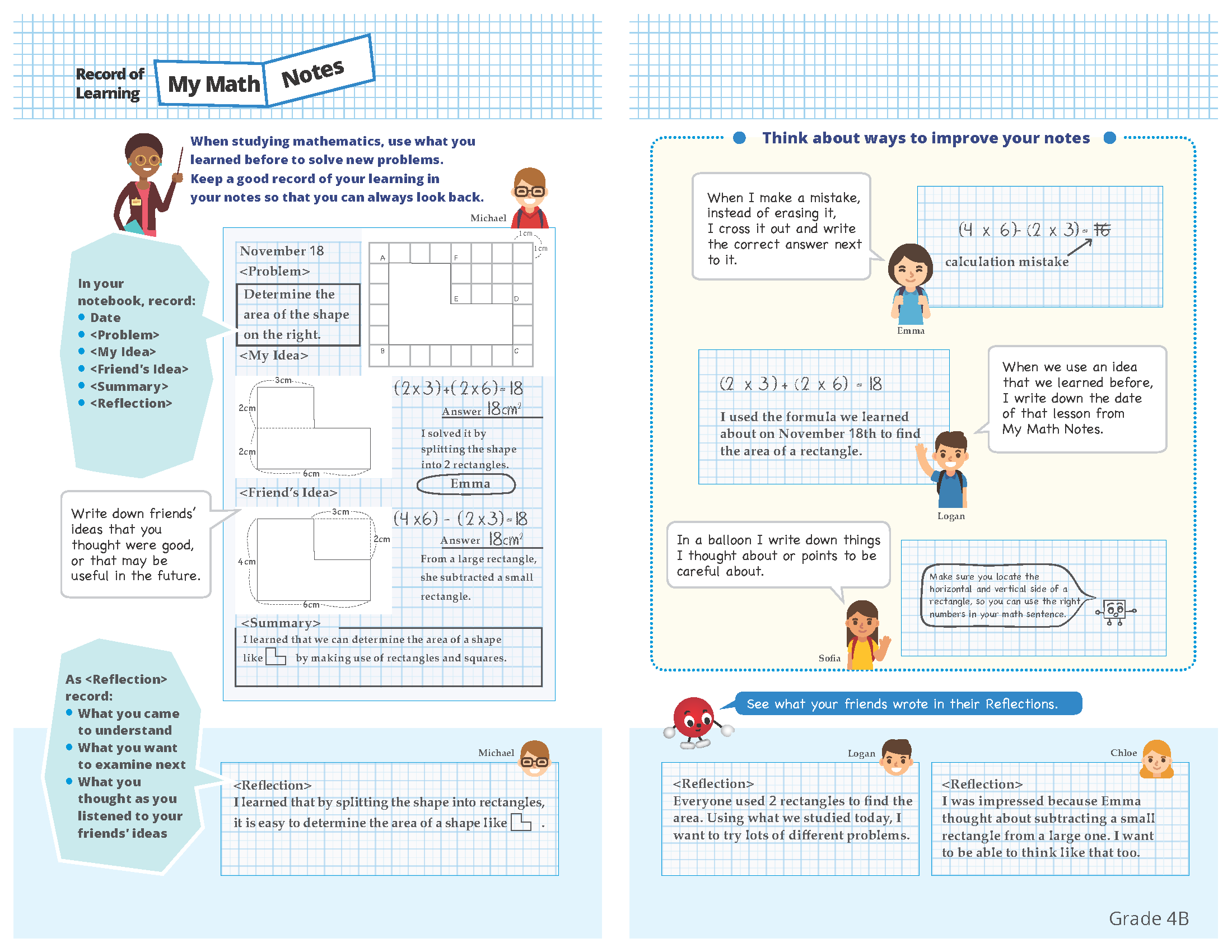I don’t think there is a better way to get inside the minds of students than with the structured use of journals. Not just in terms of their ability or content knowledge but also you see their habits of mind. You learn so much about who this student is and how they naturally think about a problem.
—Jana Morse
Math Coach, Daves Avenue Elementary School, Los Gatos, CA
How Journals Help Students
Journals allow students to:
- Revisit what they learned in prior lessons
- See the growth in their own mathematical knowledge and practices
- Appreciate the value of classmates’ ideas
- Develop the habit of reflecting on how and why their thinking changed–so they become metacognitive.
Elements of a Journal Entry
A Japanese textbook example shows key elements of a journal entry, which are built gradually, beginning in kindergarten. The key elements in a journal entry are:
- Date
- Problem: a verbatim copy of the problem to be solved during the lesson
- My Idea: any number sentences, models, representations, or other information that the student generates during independent think-time
- My Friend’s Idea: a copy of the strategy shared by one of the students during the whole-class discussion
- Summary: a summary of the major learning in the lesson; typically, this is generated collaboratively by the class
- Reflection: 1-2 sentences summarizing what students learned; how their ideas changed; how their ideas connect with other content; their wonderings; any questions that they have; how they are feeling; etc.
Adapted from Mathematics 4B for Elementary School, H. Hironaka & Y. Sugiyama (eds.), 2006, Tokyo: Tokyo Shoseki Ltd. Copyright 2006 by Tokyo Shoseki Ltd. Adapted with permission.
How Journals Help Teachers
Journals help teachers understand and respond to student thinking and identify gaps in their instruction. Teachers typically begin each TTP lesson by reading aloud several students’ journal reflections from the prior lesson. These reflections are strategically selected to highlight knowledge from the prior day’s lesson and mathematical practices the teacher is trying to build—such as writing mathematical expressions, reflecting on mistakes, or wondering.


